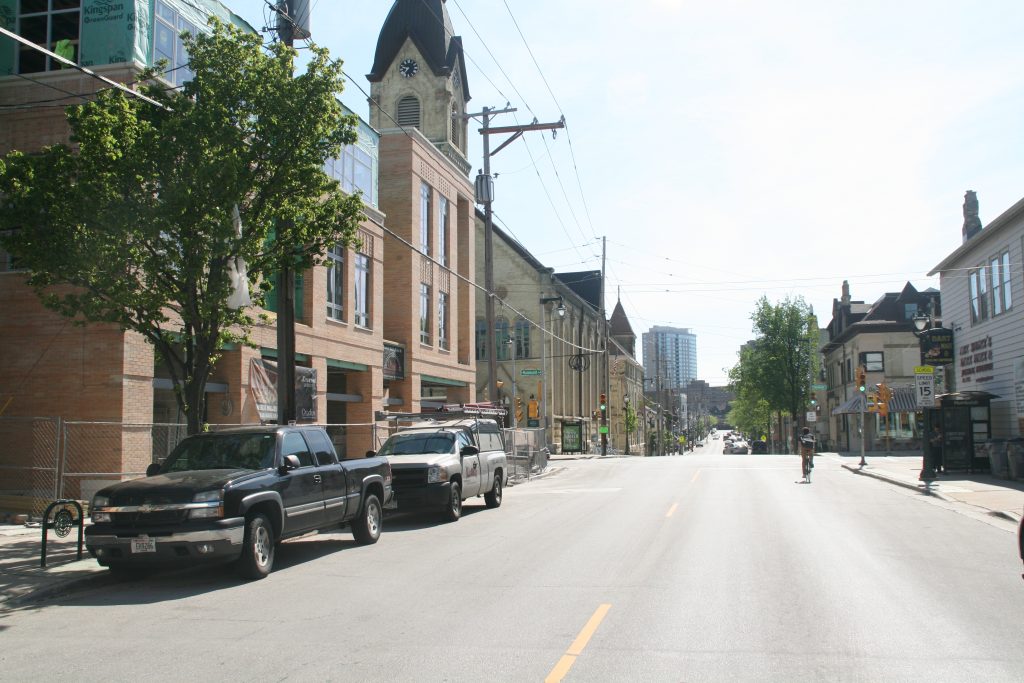GOP Revenue Sharing Plan Penalizes Cities
Milwaukee gets 10% hike in funding, rural towns get increase as high at 723%.
Under the new system proposed by Republicans to share state funding with local governments, some smaller Wisconsin communities would receive increases of several hundred percent, while the cash-strapped city of Milwaukee would see its state funding grow by 10 percent.
No communities would see their funding cut under the plan, which has the backing of local government leaders throughout the state, including in Milwaukee. But the new formula proposed by legislative Republicans to distribute a supplemental $227 million state fund for local governments puts an emphasis on small and rural communities.
The new formula “close(s) a gap on winners and losers,” said Sen. Mary Felzkowski, R-Irma, the lead author of the plan in the state Senate. Felzkowski said lawmakers are close to a final deal on the proposal, which is scheduled for its first public hearing in a state Assembly committee Thursday.
But some Democrats, particularly those from Milwaukee, say that while cities send the most tax money to the state, the new formulation doesn’t send enough back to those residents.
The extra funding in the GOP bill would be distributed across the state to help pay for police, firefighters, emergency medical services and public works. Every community would receive an increase of at least 10 percent, though some small towns will see increases that are severalfold larger.
Since 2004, local communities have received funding according to population size. But under the new formulation, towns and cities will receive funding according to a broader combination of factors. Municipalities with populations under 5,000 would see a higher “multiplier” for state funding, meaning they’d receive more funding per resident than larger communities.
In the town of Shanagolden, for example, where the population is roughly 130 people, state funding will increase by about 723 percent. That will amount to an extra $32,000 from the state, compared to its existing state aid of $4,455.
By contrast, Milwaukee, with more than half a million residents, will see an increase of 10 percent. That will mean receiving an extra $21.75 million, on top of its existing $217.49 million in state aid.
Felzkowski said lawmakers worked with associations representing Wisconsin’s towns, cities and counties to respond to how communities of different sizes deliver services. She said it would make revenue sharing more equitable for Wisconsinites in rural areas.
“When you’re a town, no matter how many people you have in it, and you’re getting $5,000 a year (from the state), how is that fair?” she said Wednesday in an interview with Wisconsin Public Radio. “So we’ve really been able to close those gaps and work with the towns and municipalities and the counties to get that to where it needed to be.”
Philip Rocco, a political scientist at Marquette University, said that the new formula leads to a different type of disparity in funding.
“At one level, this piece of legislation does create a 10 percent increase for county and municipal governments across the state,” he said. “But the effects of that increase are going to be felt much more strongly in some of the smaller communities that really turn out to be, at least in per capita terms … much larger winners.”
The broad outlines of the funding proposal were introduced in a series of press conferences last week, including one featuring Assembly Speaker Robin Vos, R-Rochester, Milwaukee Mayor Cavalier Johnson and Milwaukee County Executive David Crowley. In addition to state funding, the proposal would let both the city and county of Milwaukee raise their sales taxes to retire old pension debt.
The proposal is a culmination of lengthy negotiation between lawmakers, local government groups and the governor’s office over how to distribute funding to communities struggling to provide the basics, like emergency medical services. The new fund will pull from the state sales tax, with expectations that funds for local governments will grow alongside state tax revenue.
New funding formula attaches new strings
The legislation dictating the use of those funds also levies a number of provisions for how they can be used.
Most central is the provision that these funds can only be used for “core services” like police, ambulance and transportation.
But there are many more specific strings attached to the money. For example, local communities would have to maintain a certain level of policing staff and hit certain policing goals, such as number of arrests and traffic citations.
Rocco, the Marquette political scientist, says the state’s shared revenue program for counties and municipalities has long been a “no strings attached” transfer. The new legislation, he said, essentially transforms the system “to a policy in which 100 percent of the dollars have a condition attached to them.”
Other provisions include a 14-day cap on how long a local health officer can close down businesses to control a pandemic and a ban on local governments putting advisory referendums on their ballots.
“That doesn’t have anything to do with revenue, specifically, except for the fact that it costs money to put those measures on the ballot. But it does really restrict what democratically elected local governments can do,” said Rocco.
The city of Milwaukee also faces a series of conditions of its own. For example, voters would have to first approve the sales tax increases in the city and county. The city would also have to hire more police and firefighters, and could not use state money for its streetcar system.
Milwaukee politicians have expressed concerns about those provisions. On Tuesday, before the details of the new formula were released, Sen. LaTonya Johnson, D-Milwaukee, called those restrictions “like holding a loaded gun to our heads.”
Listen to the WPR report here.
Wisconsin Republicans prioritize smaller communities in new local government funding formula was originally published by Wisconsin Public Radio.
More about the Local Government Fiscal Crisis
- Mayor Johnson’s Budget Hikes Fees, Taxes In 2025, Maintains Services - Jeramey Jannene - Sep 24th, 2024
- New Milwaukee Sales Tax Collections Slow, But Comptroller Isn’t Panicking - Jeramey Jannene - Jun 28th, 2024
- Milwaukee’s Credit Rating Upgraded To A+ - Jeramey Jannene - May 13th, 2024
- City Hall: Sales Tax Helps Fire Department Add Paramedics, Fire Engine - Jeramey Jannene - Jan 8th, 2024
- New Study Analyzes Ways City, County Could Share Services, Save Money - Jeramey Jannene - Nov 17th, 2023
- New Third-Party Study Suggests How Milwaukee Could Save Millions - Jeramey Jannene - Nov 17th, 2023
- Murphy’s Law: How David Crowley Led on Sales Tax - Bruce Murphy - Aug 23rd, 2023
- MKE County: Supervisors Engage in the Great Sales Tax Debate - Graham Kilmer - Jul 28th, 2023
- MKE County: County Board Approves Sales Tax - Graham Kilmer - Jul 27th, 2023
- County Executive David Crowley Celebrates County Board Vote to Secure Fiscal Future and Preserve Critical Services for Most Vulnerable Residents - David Crowley - Jul 27th, 2023
Read more about Local Government Fiscal Crisis here
Political Contributions Tracker
Displaying political contributions between people mentioned in this story. Learn more.
- August 13, 2015 - Cavalier Johnson received $25 from David Crowley






















It is funny Repubilicans are all about local control of tax dollars when they don’t have the power at the higher level. The minute they have the power they want to dictate what happens.
Borrowing a term from Ayn Rand, the residents of urban areas of this State are the Makers and residents of the rural areas are becoming the takers. Urban areas send the vast majority of tax revenue to Madison while the rural areas do little for economic development and the residents receive Food Stamps, have medical coverage from Medicare and Medicaid, and farmers get generous subsidies from the Federal Government. Their elected representatives do little to promote economic development even opposing the development of recreational land which would draw tourists.
Surprising to no one who has been paying attention since the State of WI legislature has been gerrymandered into a Republican institution for perpetuity. These lifetime politicians have no interest in serving democracy (small “d”) and a huge interest in pleasing their anti-democracy Pluto- and Kleptocrat funders. The majority of citizens lose, while the 1% keeps shoveling money into their pockets.
The Wisconsin Supreme Court needs to take up a gerrymandering lawsuit as soon as possible. There is no reason it cannot simply take a case from the circuit court and rule. It did that many times under Walker and even under Gov. Evers.